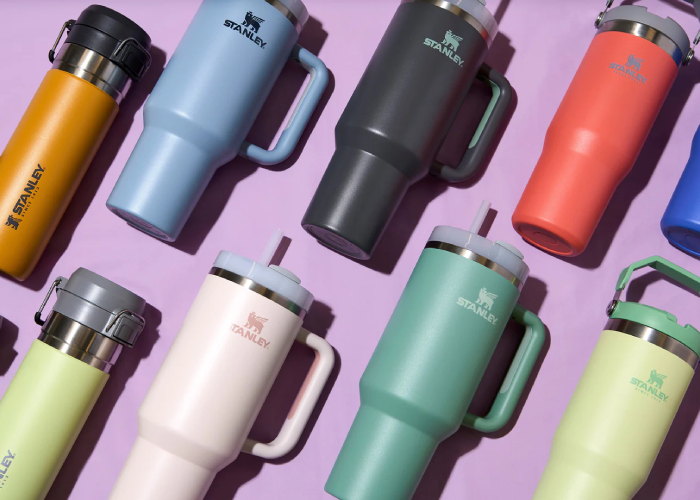
Did you know Stanley was actually a 110 year old brand, but is now the must-have item thanks to TikTok. How you might ask? Here’s the story….
Founded in 1913, Stanley was initially known for its practical products that catered to a specific demographic. The brand focused on durable, functional items that were essential for outdoor activities and work environments.
Over the decades, Stanley’s presence declined, and it became a somewhat nostalgic name, associated more with a historic era than with contemporary relevance.
The turn of the century saw Stanley maintaining a low profile, with its products appreciated by a loyal but limited customer base. It wasn’t until the early 2020s that Stanley experienced an unexpected resurgence.
In 2020, after completing a seven-year tenure at Crocs where he spearheaded the strategy that transformed the shoe into a trendy item, entrepreneur Terence Reilly took on a new challenge.
As the president of Stanley, Reilly was ready to replicate his success with this brand.
The power of TikTok
In this new era, the brand has repositioned itself to appeal to a broader, more diverse audience. The brand is now synonymous not only with durability and utility but also with style and social media trendiness.
The revival of Stanley was largely fueled by social media influencers, particularly on platforms like TikTok, where a younger audience discovered Stanley’s products.
The Stanley cups, in particular, went viral, appealing to a new generation that valued both the aesthetic and functional aspects of the products.
This shift in brand perception has been remarkable, with Stanley cups becoming a must-have accessory for the modern consumer.
Stanley’s digital marketing strategy has been crucial in its resurgence. Influencers on platforms like TikTok have showcased Stanley products in various lifestyle contexts, making them relatable to a younger audience.
@danimarielettering Thirsty after you catch on fire? @Stanley 1913 is like no problem i gotchu #fyp #carfire #accident #stanleycup ♬ original sound – Danielle
The demonstration of Stanley’s durability took social media by storm reaching around 94 million views.
Stanley acknowledged this, and in a reply video, Reilly proposed to provide her with complimentary Stanley products and replace her car, ultimately purchasing her a new Mazda a month later.
This approach has not only increased brand awareness but also transformed the perception of Stanley from a practical brand to a lifestyle choice.
New customers
The new target audience for Stanley includes environmentally conscious consumers who value sustainability, style, and practicality.
This demographic seeks products that are not just functional but also align with their values and lifestyle choices.
While maintaining the quality and durability that the brand has always been known for, Stanley has introduced new color palettes, patterns, and features that appeal to a style-conscious market.
The design tweaks and aesthetic improvements have played a significant role in appealing to a demographic that values both form and function.
Totally engaged
Stanley has also embraced community engagement as a key strategy in its resurgence.
By actively seeking customer feedback and engaging with its audience on social media, it has been able to tailor its products and marketing strategies to meet the evolving needs and preferences of its customers.
This approach has not only helped in building a loyal customer base but also in continuously adapting to market trends and consumer expectations.
Stanley’s significant transformation from a functional brand to a viral sensation exemplifies the power of social media and digital marketing in the modern business landscape.
By adapting to the changing times and embracing new marketing strategies, Stanley has successfully reinvented itself, reaching a new generation of consumers and securing its place in the contemporary market.
